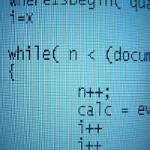Cheating on the N Queens benchmark
Many Solver distributions include an N Queens example, in which n queens need to be placed on a n*n sized chessboard, with no attack opportunities. So when you’re looking for the fastest Solver, it’s tempting to use the N Queens example as a benchmark to compare those solvers. That’s a tragic mistake, because the N Queens problem is solvable in polynomial time, which means there’s a way to cheat.
That being said, OptaPlanner solves the 1 000 000 queens problem in less than 3 seconds. Here’s a log to prove it (with time spent in milliseconds):
1 2 3 4 5 6 7 8 | INFO Opened: data/nqueens/unsolved/10000queens.xmlINFO Solving ended: time spent (23), best score (0), ...INFO Opened: data/nqueens/unsolved/100000queens.xmlINFO Solving ended: time spent (159), best score (0), ...INFO Opened: data/nqueens/unsolved/1000000queens.xmlINFO Solving ended: time spent (2981), best score (0), ... |
How to cheat on the N Queens problem
The N Queens problem is not NP-complete, nor NP-hard. That is math speak for stating that there’s a perfect algorithm to solve this problem: the Explicits Solutions algorithm. Implemented with a CustomSolverPhaseCommand in OptaPlanner it looks like this:
01 02 03 04 05 06 07 08 09 10 11 12 13 14 15 16 17 18 19 20 21 22 23 24 25 26 27 28 29 30 31 32 33 34 35 36 37 38 39 40 41 42 43 44 45 | public class CheatingNQueensPhaseCommand implements CustomSolverPhaseCommand { public void changeWorkingSolution(ScoreDirector scoreDirector) { NQueens nQueens = (NQueens) scoreDirector.getWorkingSolution(); int n = nQueens.getN(); List<Queen> queenList = nQueens.getQueenList(); List<Row> rowList = nQueens.getRowList(); if (n % 2 == 1) { Queen a = queenList.get(n - 1); scoreDirector.beforeVariableChanged(a, "row"); a.setRow(rowList.get(n - 1)); scoreDirector.afterVariableChanged(a, "row"); n--; } int halfN = n / 2; if (n % 6 != 2) { for (int i = 0; i < halfN; i++) { Queen a = queenList.get(i); scoreDirector.beforeVariableChanged(a, "row"); a.setRow(rowList.get((2 * i) + 1)); scoreDirector.afterVariableChanged(a, "row"); Queen b = queenList.get(halfN + i); scoreDirector.beforeVariableChanged(b, "row"); b.setRow(rowList.get(2 * i)); scoreDirector.afterVariableChanged(b, "row"); } } else { for (int i = 0; i < halfN; i++) { Queen a = queenList.get(i); scoreDirector.beforeVariableChanged(a, "row"); a.setRow(rowList.get((halfN + (2 * i) - 1) % n)); scoreDirector.afterVariableChanged(a, "row"); Queen b = queenList.get(n - i - 1); scoreDirector.beforeVariableChanged(b, "row"); b.setRow(rowList.get(n - 1 - ((halfN + (2 * i) - 1) % n))); scoreDirector.afterVariableChanged(b, "row"); } } }} |
Now, one could argue that this implementation doesn’t use any of OptaPlanner’s algorithms (such as the Construction Heuristics or Local Search). But it’s straightforward to mimic this approach in a Construction Heuristic (or even a Local Search). So, in a benchmark, any Solver which simulates that approach the most, is guaranteed to win when scaling out.
Why doesn’t that work for other planning problems?
This algorithm is perfect for N Queens, so why don’t we use a perfect algorithm on other planning problems? Well, simply because there are none!
Most planning problems, such as vehicle routing, employee rostering, cloud optimization, bin packing, … are proven to be NP-complete (or NP-hard). This means that these problems are in essence the same: a perfect algorithm for one, would work for all of them. But no human has ever found such an algorithm (and most experts believe no such algorithm exists).
Note: There are a few notable exceptions of planning problems that are not NP-complete, nor NP-hard. For example, finding the shortest distance between 2 points can be solved in polynomial time with A*-Search. But their scope is narrow: finding the shortest distance to visit n points (TSP), on the other hand, is not solvable in polynomial time.
Because N Queens differs intrinsically from real planning problems, is a terrible use case to benchmark.
Conclusion
Benchmarks on the N Queens problem are meaningless. Instead, benchmark implementations of a realistic competition. A realistic competition is an official, independent competition:
- that clearly defines a real-word use case
- with real-world constraints
- with multiple, real-world datasets
- that expects reproducible results within a specific time limit on specific hardware
- that has had serious participation from the academic and/or enterprise Operations Research community
OptaPlanner‘s examples implement several cases of realistic competitions.
| Reference: | Cheating on the N Queens benchmark from our JCG partner Geoffrey De Smet at the OptaPlanner blog. |



